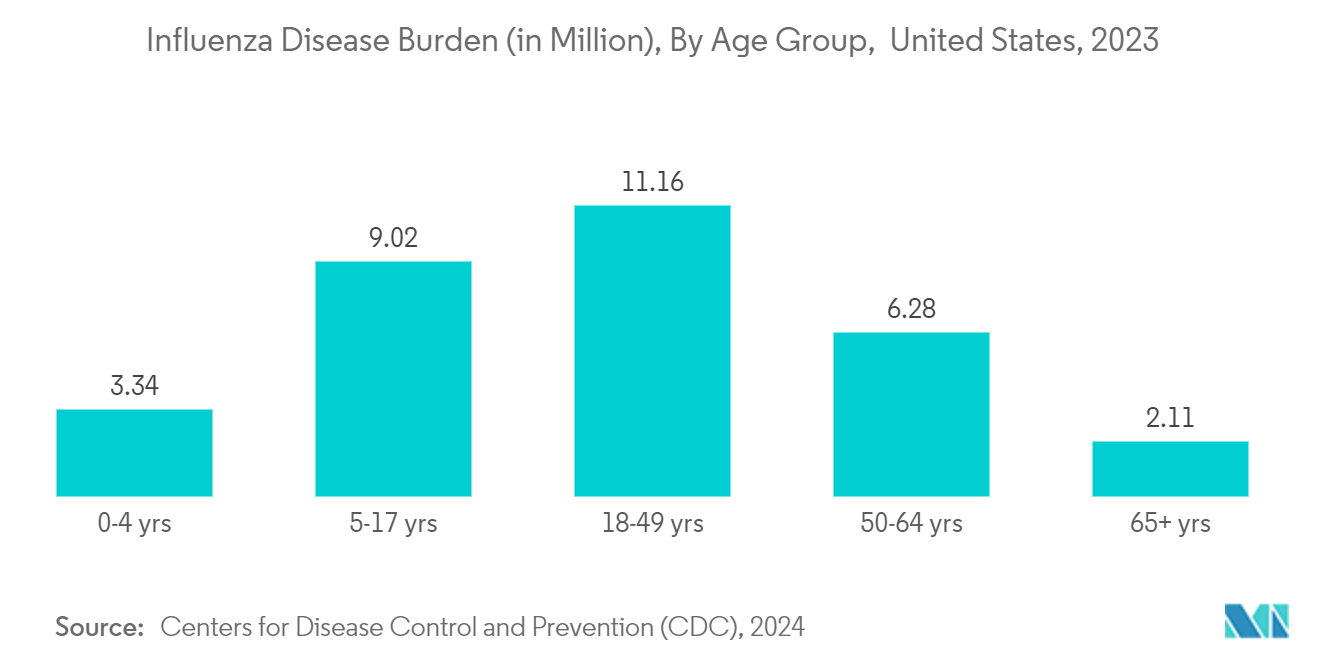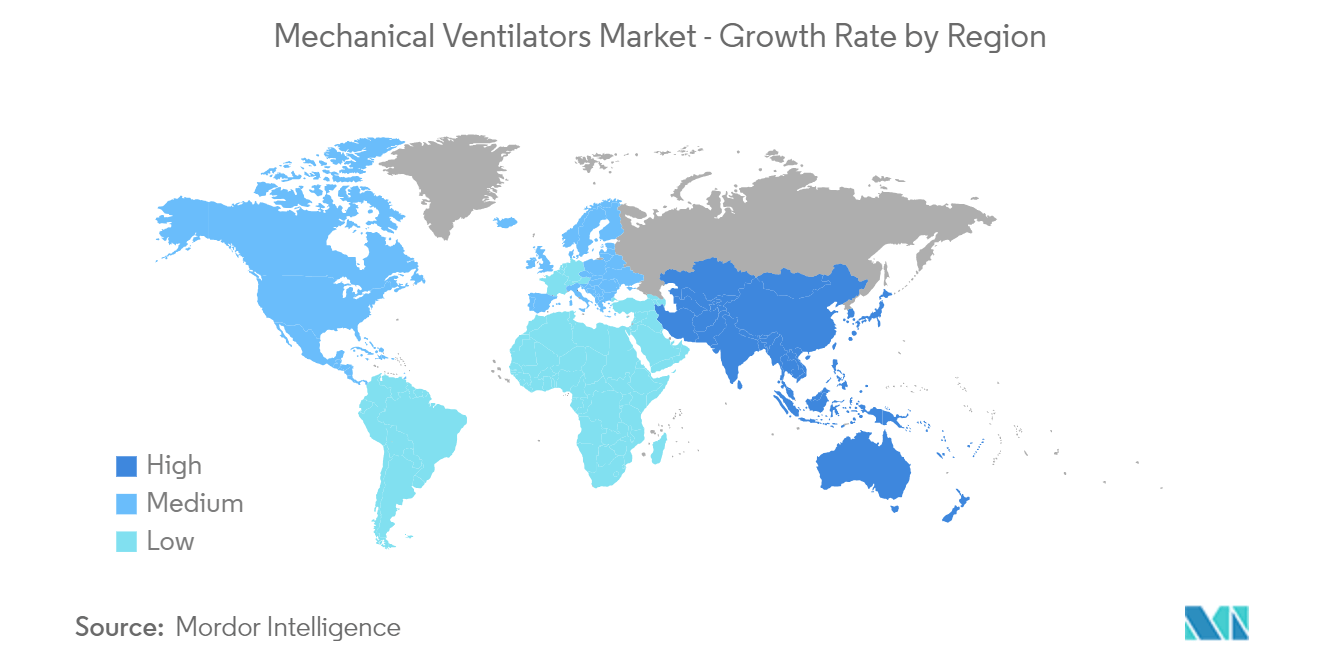Market Trends of Mechanical Ventilators Industry
Intensive Care Ventilators Segment is Expected to Grow Significantly Over the Forecast Period
Intensive care ventilators provide essential support to patients unable to breathe independently or needing assistance for adequate ventilation. These ventilators cater to both neonates and adults, accommodating a range of conditions from critically unstable patients to those in stable postoperative recovery. Driven by technological advancements and a heightened focus from manufacturers, the intensive care ventilators segment is poised for significant growth in the coming years.
As hospitals expand their ICU units, the demand for ICU mechanical ventilators is set to rise, propelling market growth. For example, the American Hospital Association's 2023 annual survey highlighted that the U.S. had 6,120 acute care registered hospitals. Notably, 5,222 of these hospitals had at least 25 acute care beds and one ICU bed. Together, they boasted 112,369 ICU beds, making up 12.2% of the total, distributed across more than 5,000 ICUs. With these centers aiming to enhance patient outcomes and effectively manage respiratory conditions, the mechanical ventilator market stands on the brink of substantial growth.
Furthermore, as companies delve into ventilator manufacturing, opportunities for segment growth emerge. For instance, in July 2024, Air Liquide Medical Systems unveiled the Monnal TEO ventilator, designed in France for intensive and critical care. This launch, a product of collaboration with Angers University Hospital's ICU in France, was developed with direct insights from doctors and healthcare professionals, all with the goal of elevating care for patients with acute respiratory failure. Such new launches and collaborative efforts among industry players are pivotal in bolstering the market for these devices.
In conclusion, the convenience of portable ventilators makes them a staple in hospitals, ensuring swift and continuous patient care even before arrival at the facility. With a rising number of hospitals, the demand for these efficient and versatile products is set to grow, further propelling the market.

North America is Expected to Hold a Significant Share of the Market Over the Forecast Period
North America is poised to capture a significant market share during the forecast period, driven by the rising prevalence of chronic obstructive pulmonary disease (COPD) and other respiratory disorders, a robust healthcare infrastructure, and the presence of key market players.
Factors such as an aging population, urbanization, and environmental pollution are driving the rising prevalence of respiratory diseases. This escalating challenge underscores the growing reliance on respiratory support devices, including mechanical ventilators. For instance, data from the Canadian Institutes of Health Information, published in February 2024, highlighted that during the 2022–2023 period, respiratory illnesses were among the top 10 reasons for hospitalizations. They accounted for 32% of all hospitalizations in Canadians aged 0 to 4. Specifically, hospitalizations for seasonal influenza in this demographic reached 2,444, consistent with figures from the 2019–2020 period.
Moreover, there were notable increases in hospitalizations for various respiratory conditions. For instance, stays for lower respiratory infections, including acute bronchitis, surged from 9,501 in 2020 to 19,909 in 2023. Likewise, pneumonia-related hospitalizations saw a near tripling, jumping from 3,447 to 9,871 in the same period. Given this backdrop, the rising COPD cases are amplifying the demand for mechanical ventilators, suggesting a bullish outlook for market growth.
In addition, companies are rolling out innovative ventilator systems, boasting features like advanced monitoring, portability, and intuitive interfaces. These enhancements are drawing the attention of healthcare providers keen on elevating patient care. For instance, in May 2023, Fisher & Paykel Healthcare Corporation Limited unveiled the Airvo 3 high-flow system. With its targeted oxygen delivery, built-in battery, user-friendly interface, and settings tailored for pediatric and neonatal patients, the Airvo 3's increased maximum flow rate distinguishes it in the marketplace. This strategic launch not only expanded the company's clientele but also cemented its competitive edge, further fueling market growth.
In conclusion, the dual challenges of a high burden of respiratory diseases and COPD, coupled with strategic product launches, are set to drive the market in North America during the forecast period.


